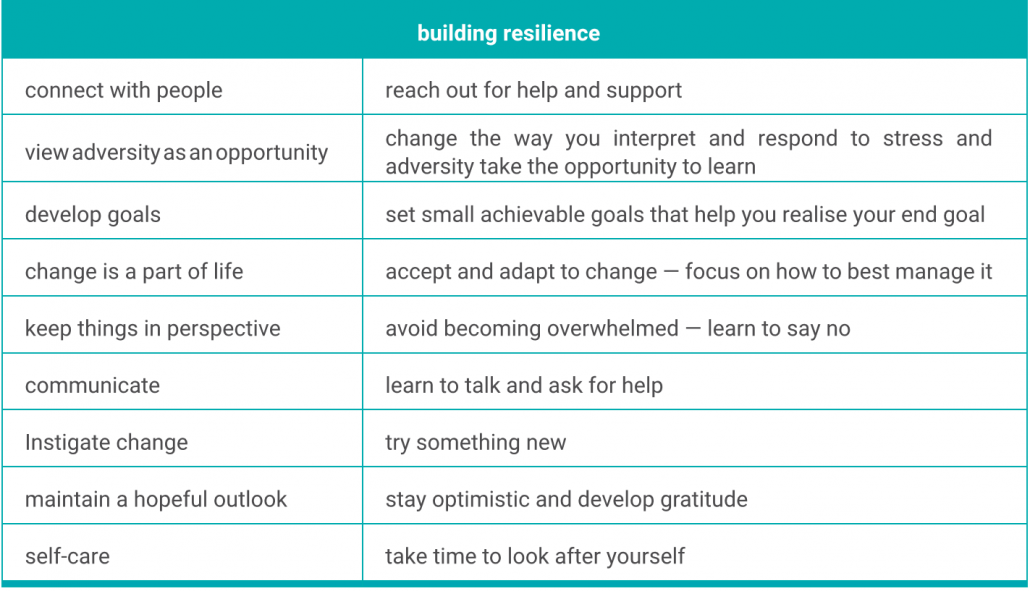Resilience Copy

What is resilience?
Resilience is the ability to adapt well in the face of adversity. It is an essential skill for coping with the many obstacles we face in our lives. Resilience is shaped partly by our individual characteristics such as our genes, our personality and our disposition and partly by our environment such as our family, our community and the broader society.
A combination of factors contribute to resilience, including a positive attitude, optimism, the ability to regulate emotions, and the ability to see failure as a form of helpful feedback. Research shows that having caring and supportive relationships, within and outside the family, can be the most significant factor in bolstering resilience. Relationships create love and trust, provide role models and offer encouragement, reassurance and support.
How to build resilience?
Resilience can be learned and developed and enhanced. There is a road to resilience. Some say it is about learning to bounce back and to bounce forward.
Resilience is about experiencing, learning and changing perspective. It involves facing fear or disappointment, being honest and true to yourself, being bold and brave, recognising strengths and soft spots and actively engaging in change — changing your perspective, changing your attitude and changing your life. Building resilience is a personal and life-long journey.



Resilient people acknowledge a situation, learn from it and actively move forward. Graham Gibbs, a sociologist and psychologist, developed the Resilience Reflection Cycle, which is a helpful tool for reviewing and reflecting. This helps to foster resilience.
You will find an exercise to undertaken on the Gibb’s Resilience Cycle in the Course Workbook on page 30:

